CALL US! 1-415-766-2722
Fun@SanFranciscoJeepTours.com
Although widely attributed to Mark Twain, there is no concrete evidence that he actually said, “The coldest winter I ever spent was a summer in San Francisco.” This quote has taken on a life of its own, becoming a popular phrase associated with San Francisco’s cool and foggy summers. Despite the misattribution, the sentiment resonates with many who have experienced the city’s unique microclimate. So, whether Twain said it or not, it remains a playful nod to the city’s renowned fog and its ability to create a chilly ambiance even during the warmer months.
San Francisco experiences a unique type of fog called advection fog. As warm, moist air from the Pacific Ocean collides with the cooler California wind current near the coast, the fog rolls in. This low-rolling fog, known as Karl, forms when the warm air passes over colder surfaces like the San Francisco Bay or nearby land. Unlike radiation fog, which dissipates in the morning, Karl persists throughout the day, shrouding the city in its misty embrace.
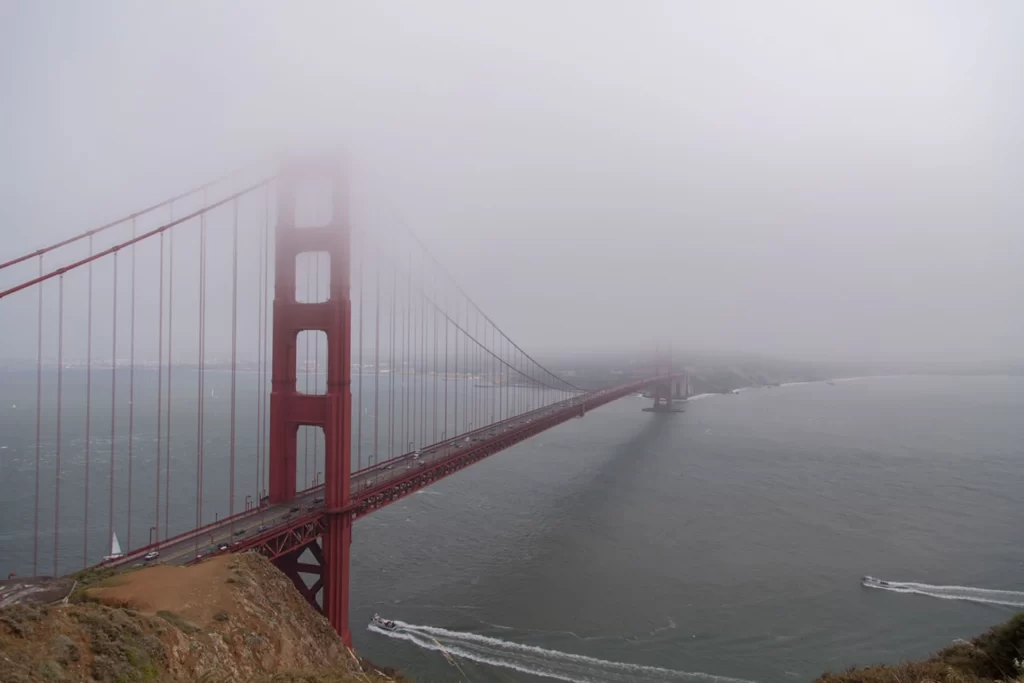
The iconic Golden Gate Bridge has two fog horns that blast for 2.5 hours each day, on average. These fog horns play a crucial role in guiding sailors safely through the wall of fog. Since the bridge’s opening in 1937, these horns have become synonymous with San Francisco’s identity. Located at the middle of the bridge and the south tower on the San Francisco side, each horn emits a different tone at different times. During the summer, also known as the foggy season, these horns can sound for over five hours a day, ensuring safe passage for ships navigating through Karl’s misty realm.
Fog is essentially water droplets suspended in the air, mixed with dust and other microscopic particles. When humid air cools and reaches its dew point, it becomes saturated with water vapor. As the air continues to cool, it loses its ability to hold the vapor, causing it to condense around tiny particles and form droplets. These droplets accumulate to create fog. So, the next time you find yourself surrounded by the mystical embrace of San Francisco’s fog, remember that it’s a dance of science and nature in the air.
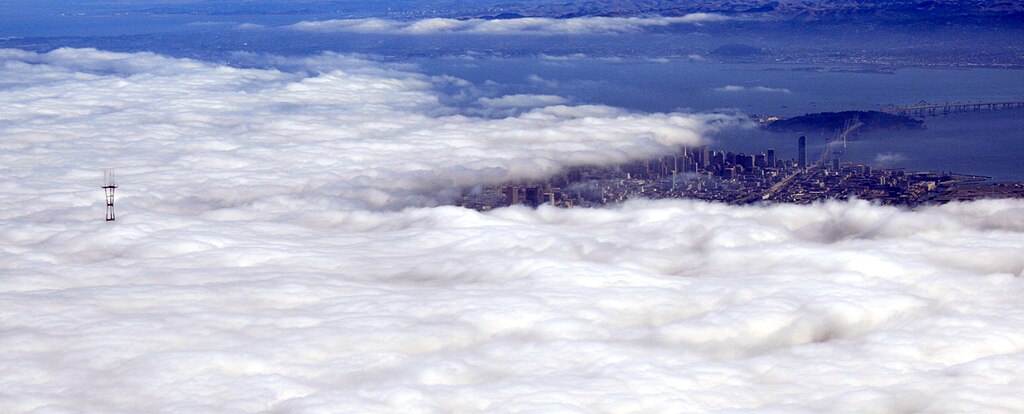
According to the National Weather Service, fog is defined as visible moisture that forms below a height of 50 feet, while clouds are located above this height. Fog blankets the ground, giving it a distinct appearance, whereas clouds fill the sky. So, next time you find yourself walking through the misty streets of San Francisco, you’ll know that you’re experiencing a cloud close to the ground.
Coastal Redwood trees, the magnificent giants found along the California coast, have a unique relationship with fog. During summer, these trees can derive over half of their moisture from the fog. They absorb fog droplets through their leaves and even soak up the water that drips from the fog-saturated soil. So, next time you admire these towering beauties, remember that fog plays a vital role in their survival and growth.
“Fog spilled from the heights of San Francisco like the liquid it almost was. On better days it spread across the bay and took over Oakland street by street, a thing you saw coming, a change you watched happening to you, a season on the move. Where it encountered redwoods, the most local of rains fell. Where it found open space, its weightless pale passage seemed both endless and like the end of all things. It was a temporary sadness, the more beautiful for being sad, the more precious for being temporary. It was the slow song in minor that the rock-and-roll sun then chased away.”
Jonathan Franzen, Purity
Many people have a misconception that fog contains a significant amount of water. However, fog is actually made up of droplets with plenty of space between them. You can put your hand through it, and although it may drizzle on your arm, it won’t feel like swimming in water. Fog appears denser than it actually is, and it has a whimsical, ethereal quality that adds to its allure.
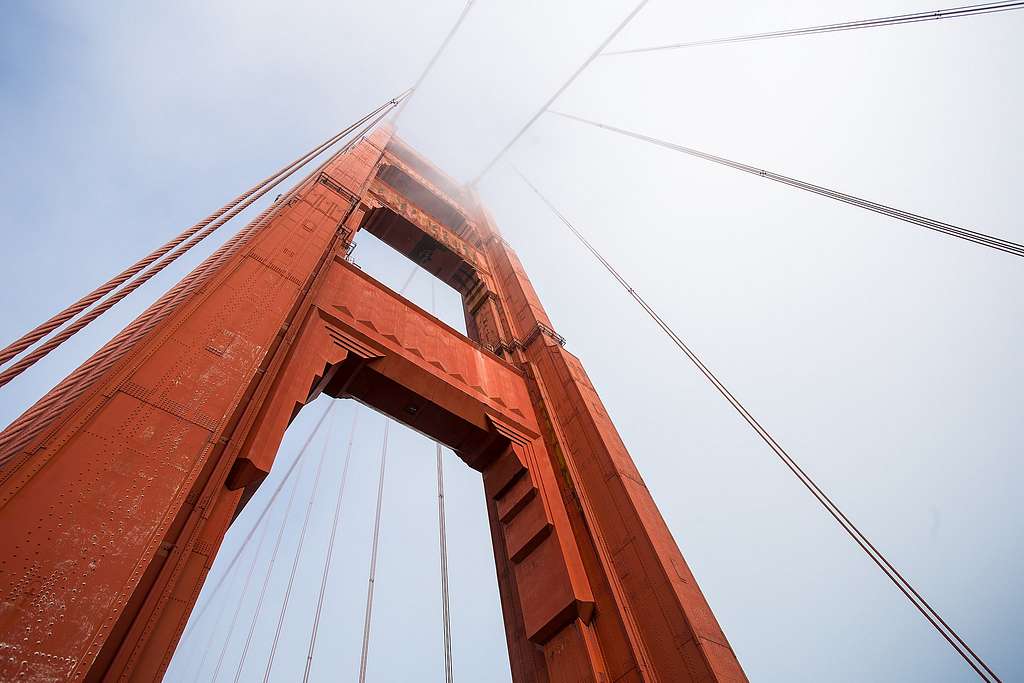
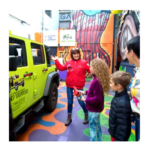 See San Francisco in Style – Book Your Private Jeep Tour!
See San Francisco in Style – Book Your Private Jeep Tour!Explore must-see locations with a Private Jeep Tour—your guide, your pace! Enjoy epic views, cross the Golden Gate Bridge, and stop for incredible photos.!
Don’t just visit—experience San Francisco! – Reserve your Jeep tour today!
San Francisco’s fog has gained an online personality with the name “Karl.” @KarltheFog, a social media account, has amassed a massive following, with over 356,000 followers on Twitter and more than 250,000 on Instagram. Locals affectionately refer to the fog as “Karl,” and the online persona has become a Bay Area celebrity. The name Karl, inspired by Tim Burton’s film “Big Fish,” adds a touch of whimsy to the fog’s enigmatic presence, reminding us that there’s always room for a little humor in nature.
While fog can appear in any month, the fog season in San Francisco typically extends from April to October. August, aptly known as “Fogust,” is the peak of foggy weather. During summer, the fog creates microclimates, with stark temperature variations between coastal and inland areas. Half Moon Bay may be a chilly 50 degrees, while just 30 miles east, people are donning shorts. So, if you’re planning a visit to the Bay Area, be prepared for the mystique of June Gloom, No Sky July, and Fogust and all their unique weather patterns.
San Francisco’s summer fog is a result of the city’s climate anomaly. While much of the Northern Hemisphere experiences scorching summers, San Francisco’s average July high temperature is a cool 67 degrees Fahrenheit, with evening temperatures dipping into the 50s. The cold water off the coast, caused by upwelling, combines with warmer ocean breezes, leading to the formation of fog. As warm air rises inland, the fog gets drawn through the Golden Gate and envelops coastal cities, including San Francisco and Point Reyes. In fact, Point Reyes averages a staggering 200 foggy days per year.
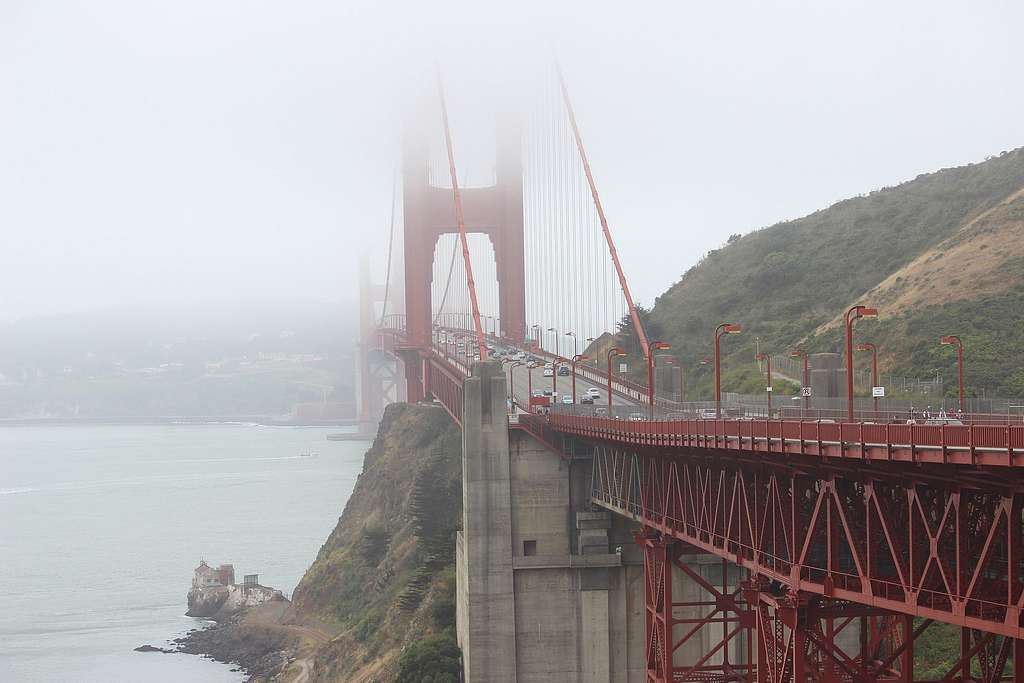
The foggiest time in San Francisco is during the warmer summer months, particularly June through August. Locals even coined the term “June gloom” to describe the damp, cool, fog-laden days that prevail in early summer. June holds the title for the foggiest overall month in San Francisco. So, if you’re planning a visit and want to avoid the fog, consider exploring the city during winter when the foggy embrace is less frequent.
“Fog is like your ex. It’s always lurking around when you least expect it.” – Unknown
“Fog: Nature’s own ethereal blanket, keeping San Francisco cozy and mysterious.” – Anonymous
“Fog is like a magician’s trick—it appears, disappears, and leaves you in awe.” – Unknown
San Francisco may be famous for its fog, but it’s not alone. Here are five other foggy spots in North America:
Fog consists of tiny water droplets suspended in the air. On average, fog contains up to 0.5 milliliters of water per cubic meter. To put it into perspective, if you were to condense the fog in an Olympic-sized swimming pool, you would be left with around 1.25 liters of water.
San Francisco’s fog and unique geography played a role in baffling early European explorers. The fog often obscured the opening to San Francisco Bay, causing navigators like Juan Rodríguez Cabrillo and Francis Drake to bypass it. It wasn’t until Juan de Ayala’s expedition in 1775 that Europeans successfully passed through the fog and anchored near Angel Island. The misty veil of fog may have kept San Francisco Bay hidden, adding an air of mystery to the region’s exploration.
As you traverse the streets of San Francisco, let the fog envelop you in its mystique and appreciate its role in shaping the city’s unique character. Embrace the allure of Karl and his whimsical dance, knowing that you’re experiencing a meteorological wonder unlike anywhere else.
 Experience San Francisco Like Never Before – Book Your Private Jeep Tour Now!
Experience San Francisco Like Never Before – Book Your Private Jeep Tour Now!See the city’s top sights on your terms with a Private Jeep Tour! Your personal guide takes you to San Francisco’s must-see locations, ensuring unforgettable views and photo stops—including a breathtaking drive across the Golden Gate Bridge.
Don’t just visit—experience San Francisco in style! Spots fill fast—Book your Jeep adventure today!
San Francisco Jeep Tours is the ideal tour activity in San Francisco onboard their private tours. The customized city tour routes and entertaining tour guides cover lots of information on the “not to miss” attractions including Alcatraz.
Book a San Francisco Jeep City Tour, Sunset and City Lights San Francisco Jeep Tours, or the Full Day Combo City and Muir Woods tour to travel to many of the bucket list and off-the-beaten-track locations in and around San Francisco.
Check out the San Francisco Jeep Tours website for more information on exploring the city by the bay.
